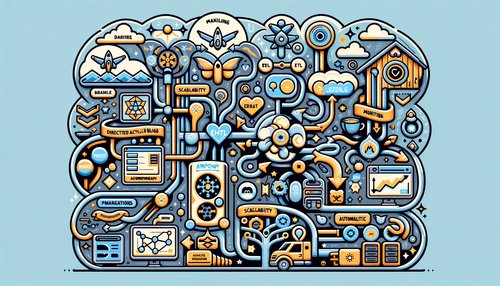The Essential Guide to Microservice Architecture
Microservice architecture is becoming increasingly popular in the software development world. It offers many benefits over traditional monolithic architectures, such as scalability, flexibility, and agility. But the transition from monolithic to microservice architecture can be a daunting task.
That’s why we’ve put together this essential guide to microservice architecture. We’ll cover the basics of what microservices are, how they work, and how to get started building a microservice architecture. We’ll also discuss the benefits and challenges of microservice architecture, and provide best practices for success.
What is Microservice Architecture?
Microservice architecture is an approach to software development that breaks down a complex application into smaller, independent services. Each service is responsible for a specific business capability and is built, tested, and deployed independently.
The main benefits of microservice architecture are scalability and flexibility. Because each service is independent, it’s easy to scale individual services as needed. This makes it easier to add new features or update existing ones without impacting the entire application.
How Does Microservice Architecture Work?
Microservice architecture is based on the concept of service-oriented architecture (SOA). In an SOA, services are decoupled from each other and communicate through a common messaging system. This allows services to be modified and deployed independently, without impacting other services.
In a microservice architecture, each service is responsible for a specific business capability. This means that services can be developed, tested, and deployed independently. This makes it easier to scale services as needed, and to add new features and services without impacting existing ones.
What Are the Benefits of Microservice Architecture?
The primary benefit of microservice architecture is scalability. Because each service is independent, it’s easy to scale individual services as needed. This makes it easier to add new features or update existing ones without impacting the entire application.
Microservice architecture also offers flexibility and agility. Because services are decoupled from each other, it’s easy to modify existing services or add new ones without affecting the entire application. This makes it easier to respond to changing business requirements and customer needs.
What Are the Challenges of Microservice Architecture?
Microservice architecture is not without its challenges. One of the biggest challenges is managing the complexity of a distributed system. When a system is broken up into smaller services, it can be difficult to keep track of all the services and how they interact with each other.
Another challenge of microservice architecture is debugging. When a bug is discovered, it can be difficult to trace the issue back to the service that caused it. This can make it difficult to identify and fix the issue.
Best Practices for Microservice Architecture
The key to success with microservice architecture is following best practices. Here are some of the best practices to keep in mind when building a microservice architecture:
-
Keep services small and focused on a specific business capability.
-
Use domain-driven design to define the boundaries between services.
-
Use an event-driven architecture to communicate between services.
-
Use a service discovery system to keep track of services.
-
Use automated testing to ensure services are working correctly.
By following these best practices, you’ll be able to build a robust and scalable microservice architecture.
Conclusion
Microservice architecture is an increasingly popular approach to software development. It offers many benefits, such as scalability, flexibility, and agility. But the transition from monolithic to microservice architecture can be a daunting task.
By following best practices, such as keeping services small and focused, using domain-driven design, and using an event-driven architecture, you can build a robust and scalable microservice architecture. With this essential guide to microservice architecture, you now have the tools you need to get started.
Recent Posts

Unlocking the Power of Terraform: Mastering Conditional Expressions for Smarter Infrastructure Automation

Unveiling the Future: Navigating the Public Interface of Apache Airflow for Streamlined Workflow Management
Apache Airflow
Mastering Workflow Automation: Unconventional Apache Airflow How-To Guides for the Modern Data Enthusiast
Apache Airflow
Mastering the Cloud: Unveiling AWS CloudFormation Best Practices for Seamless Infrastructure Management



